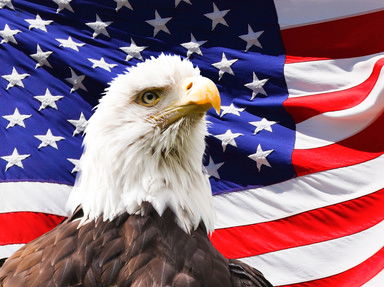Quiz Answer Key and Fun Facts
1. Pres. Thomas Jefferson announces the Louisiana Purchase to the public.
2. Construction on the Erie Canal begins.
3. Founding Fathers Thomas Jefferson and John Adams both pass away.
4. New York State abolishes slavery.
5. Union troops defeat Confederates at Vicksburg.
6. The Tuskegee Institute is founded.
7. France formally presents the Statue of Liberty to the U.S. (in France).
8. The Philippine-American War officially ends (though American occupation doesn't).
9. Black boxer Jack Johnson defeats the "Great White Hope"; riots ensue.
10. Baseball legend Lou Gehrig makes his "Luckiest Man" speech.
11. The Philippines become independent of the United States.
12. The 50-star American Flag debuts in Philadelphia to include the new states of Alaska and Hawaii.
13. President Lyndon B. Johnson signs the Freedom of Information Act.
14. NASA's Pathfinder lands on Mars.
15. The cornerstone of Freedom Tower is laid on the site of the World Trade Center.
Source: Author
gracious1
This quiz was reviewed by FunTrivia editor
ponycargirl before going online.
Any errors found in FunTrivia content are routinely corrected through our feedback system.
